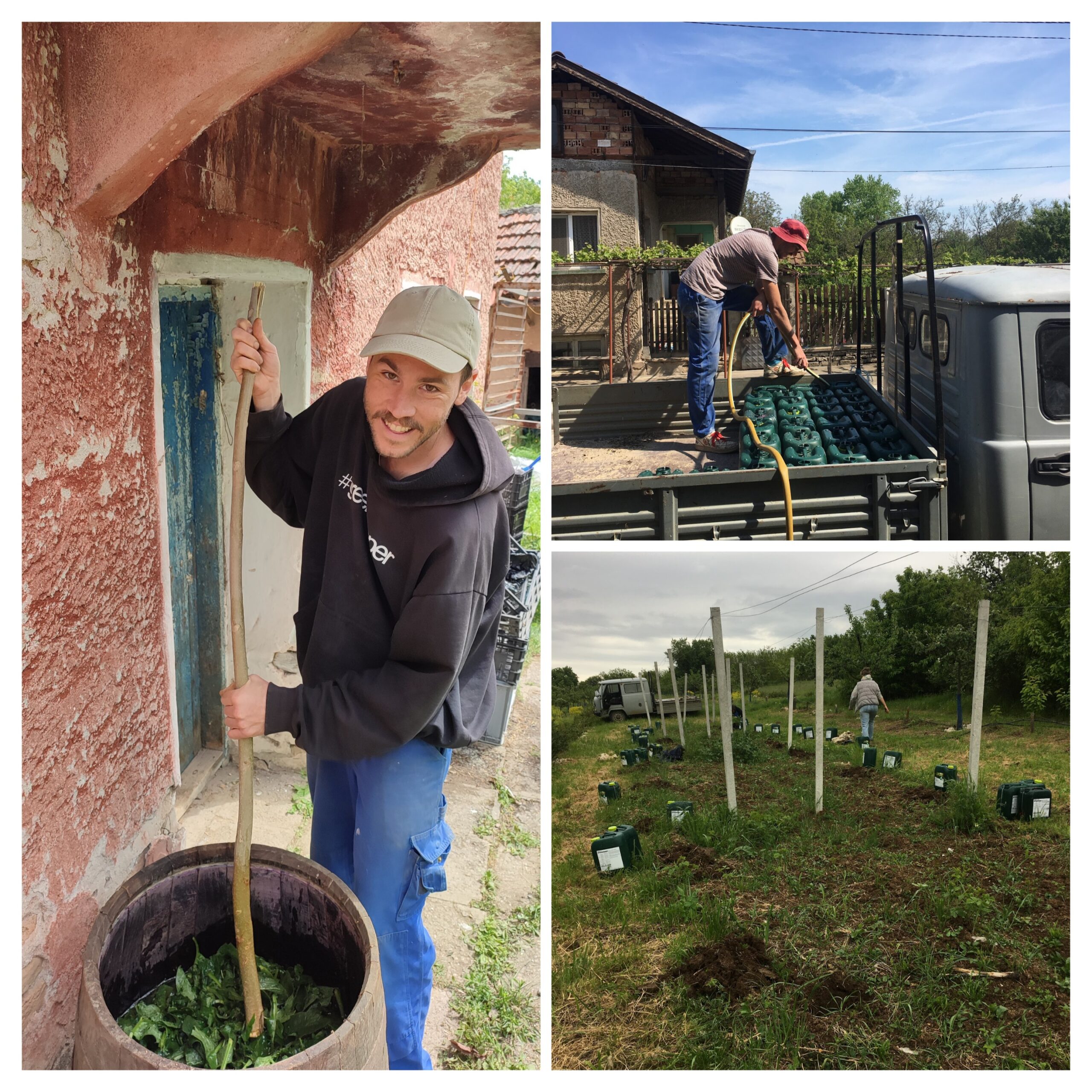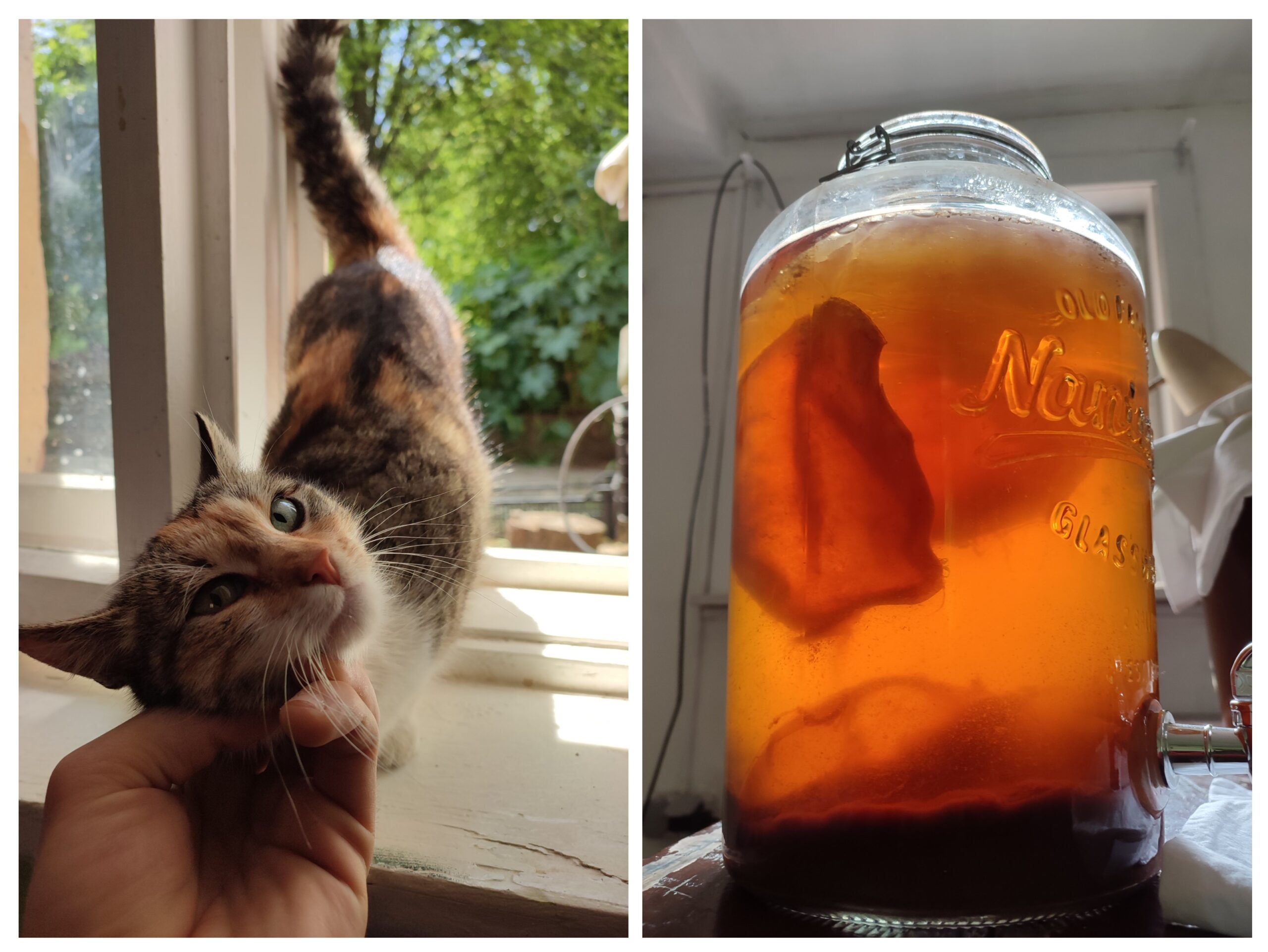Peter and Anastasja:
Dear readers,
This week we did some experiments!
On Monday, together with our host Catherine, we planted tomatoes in Suhidol. Like announced previously (Week 54), we planted the tomatoes in a way that doesn’t require irrigation later on. This method, called dry farming only requires irrigation once, and later relies on intensive mulching. Earlier in the day we filled up 30 10-liter canisters with water, so the water could warm up in the sun during the day. In the late afternoon, we went to Suhidol and dug holes for the tomatoes in between the garlic plants (garlic is a great companion for tomatoes). Then we placed some wool inside the holes and covered it with some soil. After this we irrigated the hole with more than 10 liters of water and planted the tomatoes inside. Like this, the tomatoes will follow the water in the hole, and grow longer roots. Once the plants have settled we will mulch them with straw, and keep our fingers crossed.

On Tuesday, we started two batches of kombucha with Venets’ own honey. Kombucha is a fermented tea made with a culture of bacteria and yeast (SCOBY) which feed on black tea and sugar. Both of us are experts at making water kefir, so we were super excited to get down with the booch. We made two batches: one with only honey and black tea, and one with honey, black tea, and Venets’ Oshav, a traditional Bulgarian dessert made from dried fruits. Now we are keeping these babies warm until they have fermented enough to be bottled. Then we will continue to ferment the kombucha in bottles, possibly adding some sugars (fruits or juice) for the so-called second fermentation in which the kombucha becomes carbonated and deliciously fizzy. Stay tuned!
Our babies from left to right: LEFT: Frida, the cat. RIGHT: Our growing booch. (photo credit: Peter Spornberger)
Wednesday was fertilizer tea day! Fertilizer teas are a great way to add nitrogen and other nutrients to your soil and plants. As you may remember, Peter already started some nettle tea last week. Now we also made comfrey and kale tea. Here are the recipes and uses for our teas:
For both nettle and comfrey tea the ratio is 1 kilogram of nettles/comfrey + 10 liters of water, for kale it is 1 kilogram of kale + 5 liters of water. Roughly chop up the nettles/comfrey/kale and mix them with water. Cover, so the tea does not get contaminated, but loosely, so some air can get in. Stir 1-2 times a day for roughly two weeks, to get oxygen into the mix. The tea will be ready when no more bubbles come up while mixing and the plant matter has decomposed almost completely.
All of these fertilizer teas are especially good for plants which require more nutrients, like tomatoes, peppers, cucumbers, eggplants, and such. Moreover, nettle tea can be sprayed against aphids and spider mites, and kale tea poured out against flea beetles. Be aware that the tea should be diluted in a 1 to 10 ratio (1 liter of tea + 10 liters of water) before use, otherwise it is too strong. You will notice that the tea is VERY smelly. The smell can be kept down with the addition of some rock flour or clay.
Happy experimenting,
Peter and Anastasja



